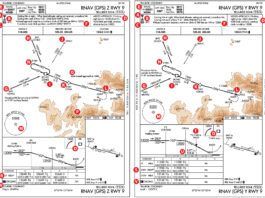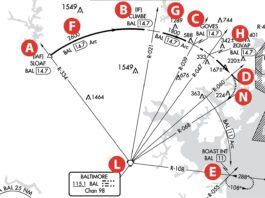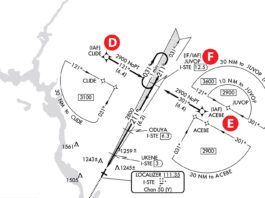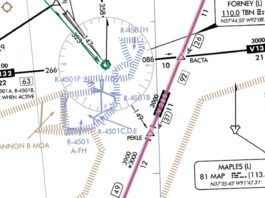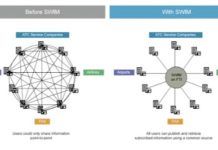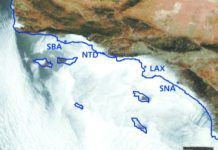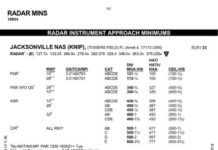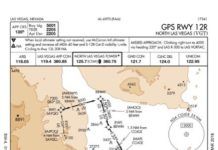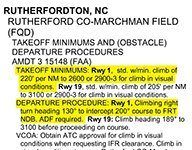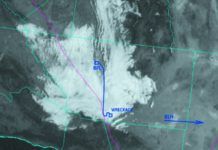Readback: June 2018
Your article entitled Seriously Bad IFR Flight in the October 2017 issue is a perfect illustration of the problems caused by technology. Ive been a pilot for 49 years, Im ex-military with my ATP, CFII, and thousands of hours of flight time in everything from helicopters to jets to biplanes.
Flying on Business
Much of general aviation activity in piston-powered airplanes is for recreation-the proverbial $100 hamburger ($1000?) on nice sunny weekends. Still, there are many general aviation pilots who fly-using the technical phrase-for the furtherance of business. Were not talking banner tows, flight instruction, skydiving, or true commercial endeavors. Furtherance of business denotes those operations that are only incidental to that business or employment. (14 CFR 61.113)
IFR in 2025
NextGens prime objective is to improve the flexibility and efficiency of our National Airspace System (NAS) to accommodate increasing traffic. This is possible only if your trip receives NextGen support from preflight to engine shutdown. Called trajectory-based operation or TBO, you will one day preflight by selecting one of several near-optimal trajectories accounting for weather, traffic, obstructions, special use airspace and more. Nice, eh?
Late Spring Transition
No matter how carefully you plan, problems seem to appear. But they can be mitigated exercising care in planning, situational awareness, and knowledge. Here, we focus on knowledge to help you gain that essential element of situational awareness to build on the rules of thumb youre originally taught.
Taking a Lap
Your favorite phrase as a pilot probably isnt, Go around. You might have been set up on final, aircraft perfectly configured, ready to call it a day, and suddenly youve got to throw all that out and try again. For a controller, the go-around is a last-minute tactic to resolve insufficient clearance or some other unexpected danger. Sure, it fixes an immediate problem, but it instantly creates other risks. Whether ATC initiates it, or you do, its adding complexity for everyone involved.
Single-Pilot Airliners
Remember when complex transport-category aircraft had a flight engineer (FE) to manage systems? I imagine there was quite an uproar when automation progressed to the point where the FE became unnecessary and airliners were certified for two-person crews.
Briefing: May 2018
Changes Follow Fatal Helicopter AccidentBoth the FAA and NTSB called for change after five people died in a helicopter accident in New York in March. They were flying in a Eurocopter AS350 with the doors off, a popular option for sightseeing flights, and were wearing special harnesses that were difficult to release. The helicopter lost power, and the pilot made an emergency landing on the East River. The aircraft then rolled over and sank. Only the pilot, who was wearing a different kind of harness, was able to escape. The FAA prohibited doors-off flights unless passengers have quick-release harnesses. The NTSB called on the FAA to prohibit commercial flights of all kinds that secure passengers without quick-release mechanisms.
Readback May 2018
I was able to pull the ODP data but not the SID data, but I can give a fairly good guess as to whats going on. On the ODP, the controlling obstacle is a 2729-foot tower a few miles to the east of the runway. The initial climb is extended a bit more than usual in order to allow for a standard climb gradient when turning right (note that for turns other than to the right, a normal 400-foot turn is allowed). The WENDY and TRUPR are examples of Open SIDs, which have a route off the runway followed by radar vectors to a route. In these cases, the route off the runway is evaluated, but then the radar vector area gets no additional evaluation (other than MVA, etc.). SID evaluation begins again at the defined route. Because theres no SID evaluation required after the initial climb, the controlling obstacle for the ODP isnt considered. The minimum turning altitude for an RNAV SID is 500 feet above the runway, which would give you a turn at 1800 vs. the turn at 1900 on the ODP to keep a standard climb gradient and clear the tower. -LS
ASR Approaches
Before the advent of GPS approaches, most civilian approach control facilities provided Airport Surveillance Radar (ASR) approaches, usually as a back-up to pilot-nav approaches. Many are now gone but some airports still have them. In Florida, only two civilian airports have ASR approaches: Key West and Tallahassee, at opposite ends of the state. However, there are seven military airports with ASR approaches.
Wheres that Runway?
Its the end of a long day filled of uncooperative weather, ground stops, and a diversion tossed in to make it interesting. Youre shooting the non-precision (of course) GPS approach, and upon reaching minimums, you look up and see … nothing. Wait a minute! Isnt that a PAPI glowing out of the left side of your window? Is that your runway? If so, whats it doing all the way over there?
Morning Commute
For some, the shoulder seasons mean ideal flying weather - crisp spring and fall mornings with great visibility, often under a stable ceiling. These conditions offer fantastic climb performance, and the lack of bugs splattered all over the windshield is a plus. Morning fog, too, is pretty to look at, although it sure puts a damper on early-bird departures.
April Accidents
From time to time we look at weather accidents, reviewing the factors that might have led to poor decision making or perhaps even weather that could not be anticipated. In this edition well take a look at the crash of a Pitts biplane in IMC conditions in California, and a Beechcraft Baron that went down in bad weather in Kentucky. Both of these incidents took place in April, so they should give you some food for thought this time of year.


